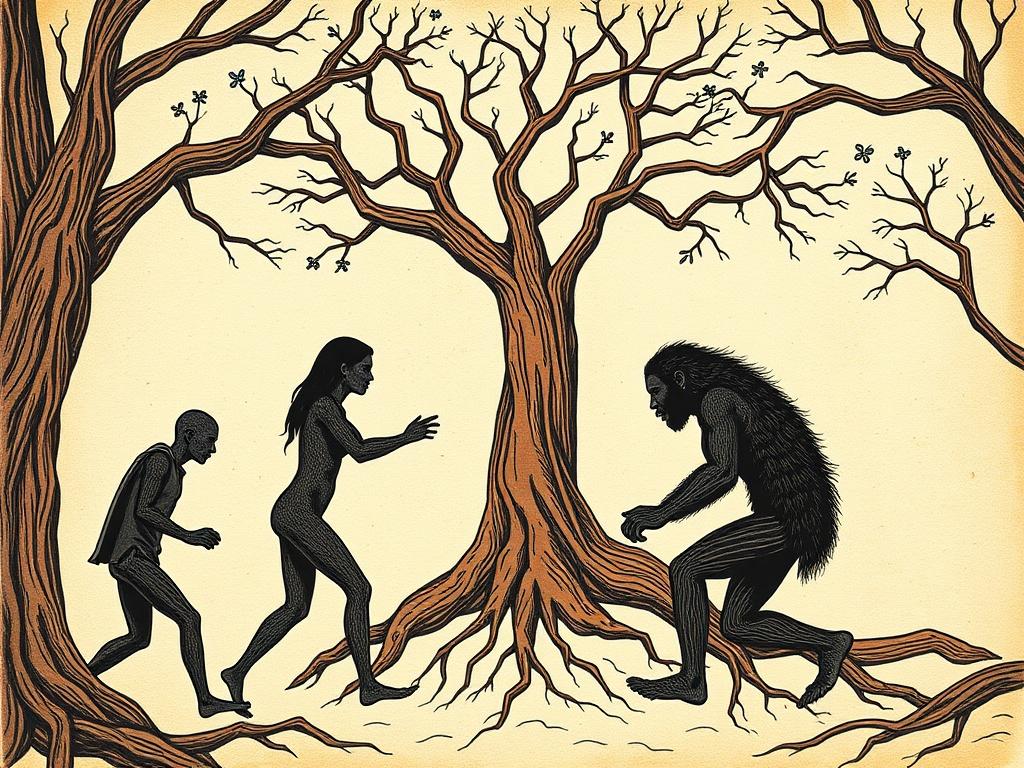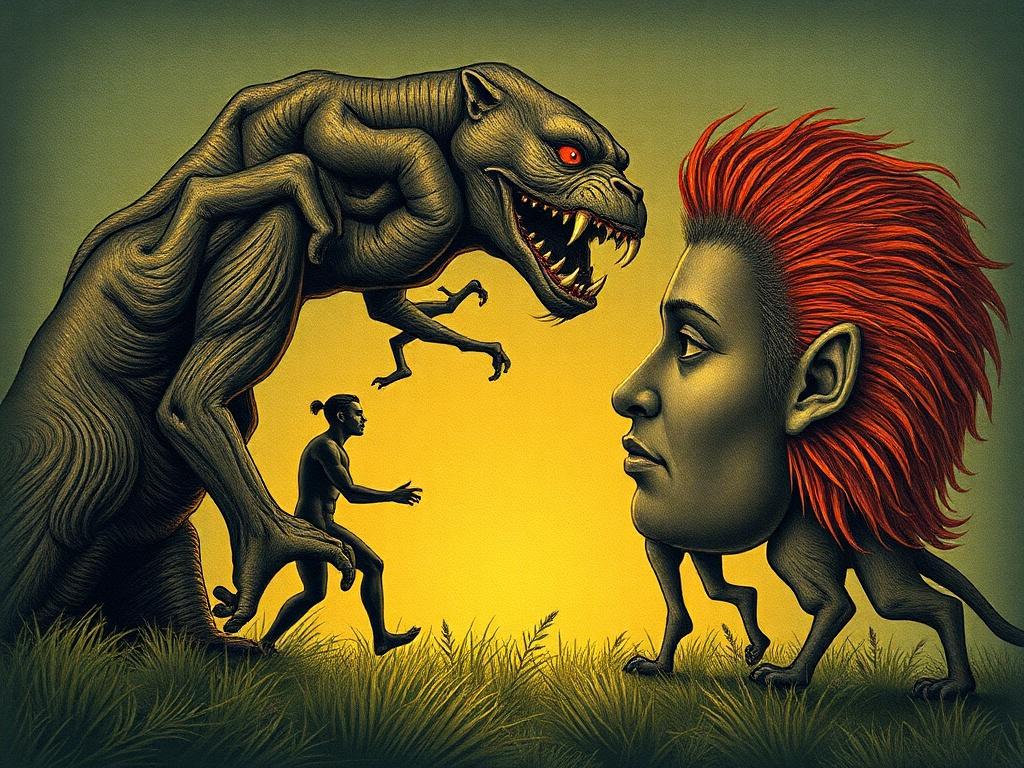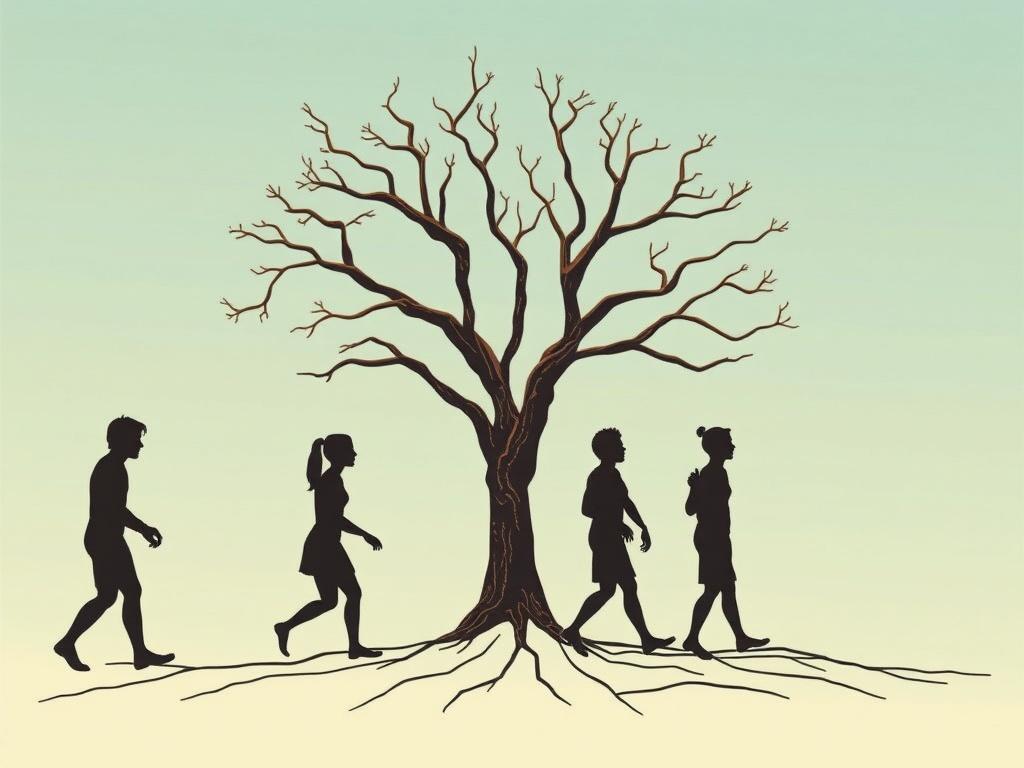Jealousy is one of the most complex and deeply ingrained emotions humans experience. It’s a feeling that can sneak up unexpectedly, often stirring intense reactions, whether in romantic relationships, friendships, or family dynamics. But have you ever paused to wonder why jealousy exists at all? Why do humans, and even some animals, experience this powerful emotion? To truly understand jealousy, we need to dive deep into its evolutionary roots. This exploration not only sheds light on the origins of jealousy but also helps us make sense of its role in our social lives today.
What Is Jealousy? More Than Just an Emotion

Jealousy is often misunderstood as simply feeling upset when someone else takes something we want, usually concerning relationships or attention. However, the evolutionary definition of jealousy encompasses a broader survival and reproductive perspective. It is an adaptive emotional response designed to protect important social bonds and resources. For our ancestors, maintaining relationships meant survival, securing resources, and successful reproduction. Jealousy acted as a warning system, signaling potential threats to these critical bonds.
The emotional turmoil jealousy causes is not simply a modern social inconvenience. Instead, it springs from complex psychological mechanisms hardwired into our DNA. These mechanisms have been shaped by millions of years of evolution, influencing our behavior in ways we are only beginning to understand. By studying jealousy through the lens of evolution, psychologists and anthropologists try to decode why we act the way we do when faced with perceived rivals or threats.
The Evolutionary Role of Jealousy in Human Relationships
In evolutionary biology, jealousy is often discussed in terms of reproductive success. The primary reason for jealousy is thought to be the prevention of infidelity or loss of a mate, which could jeopardize an individual’s chances of passing on their genes. For our ancestors, losing a partner or having their partner divided by a rival could mean fewer resources, less protection, and fewer offspring.
Jealousy ensures that individuals remain vigilant about their relationships, discouraging infidelity and encouraging mate guarding. This behavior is critical in species, especially humans, where forming long-term pair bonds improves offspring survival. By being attuned to jealousy, people are more motivated to nurture their relationships and prevent rival interference.
Interestingly, jealousy manifests differently in men and women, often linked to the different reproductive challenges each faces from an evolutionary standpoint. Men may be more sensitive to sexual infidelity because of paternity uncertainty — they want to ensure that their partner’s offspring are genetically theirs. Women, on the other hand, may experience more distress over emotional infidelity, as this could mean a loss of resources and support needed to raise offspring.
Table: Differences in Male and Female Jealousy Responses
| Aspect | Male Jealousy | Female Jealousy |
|---|---|---|
| Primary Trigger | Sexual Infidelity | Emotional Infidelity |
| Evolutionary Reason | Paternity Uncertainty | Resource Provisioning Threat |
| Behavioral Response | Mate Guarding, Confrontation | Strengthening Emotional Bonds |
These differences showcase how jealousy evolved not just as a general feeling but as a finely tuned mechanism responding to distinct survival pressures faced by men and women.
Jealousy Beyond Humans: Evolutionary Roots in the Animal Kingdom
Jealousy is not a purely human invention. Various animal species exhibit behaviors that resemble jealousy, indicating that the roots of this emotion trace back far before humans walked the earth. Primates, birds, and even some mammals show signs of jealousy when a rival threatens access to mates or essential resources.
For example, studies with primates such as chimpanzees and baboons reveal that individuals become agitated or aggressive when their social bonds are challenged by others. Male birds, known for elaborate mating displays, can become fiercely territorial and protective of their female partners. These behaviors serve as primitive expressions of jealousy, motivated by the evolutionary need to guard reproductive opportunities.
Understanding jealousy in animals helps scientists piece together how this emotion evolved. It is more than a social inconvenience; it is a fundamental mechanism for survival and reproductive success. These instincts laid the foundation for the complex human experience of jealousy we navigate today.
List: Animal Behaviors Indicating Evolutionary Jealousy
- Primates becoming aggressive when rivals approach their mate
- Male birds singing louder and defending territory from intruders
- Dogs exhibiting distress when owners show affection to other dogs or humans
- Elephants protecting calves from perceived threats
These behaviors highlight jealousy’s presence as an adaptive trait across species, reinforcing the idea that it has evolved over millions of years to enhance survival.
The Psychology Behind Jealousy: How Evolution Shapes Our Mind

While evolutionary biology provides the “why” behind jealousy, psychology delves into the “how.” Our brain architecture includes areas specifically tuned to detect social threats, causing jealousy to surface. The amygdala, a key brain region for emotional processing, activates in response to jealousy-inducing stimuli. This triggers physiological reactions like increased heart rate, sweating, and heightened alertness.
Psychologically, jealousy is intertwined with self-esteem, attachment style, and past experiences. Evolutionary factors influence these psychological traits, making individuals more or less prone to jealousy. People with insecure attachment styles, for example, tend to be more jealous, as their evolutionary mechanism for protecting bonds is more easily triggered.
This complex interplay of evolutionary and psychological factors makes jealousy a fascinating emotion to study. It serves as an internal alarm system, keeping us alert to factors that could threaten our social and reproductive success—an echo of ancient survival strategies still playing out in our modern lives.
Table: Psychological and Evolutionary Factors Influencing Jealousy
| Factor | Description | Evolutionary Link |
|---|---|---|
| Attachment Style | Pattern of close relationships formed in childhood | Protects close bonds vital for survival |
| Self-Esteem | Individual’s sense of personal worth | Bias to protect valuable social position |
| Perceived Threat | Recognition of potential loss of partner or resources | Triggers mate guarding and protective behavior |
Understanding these layers reveals how jealousy, though uncomfortable, is a natural response finely tuned over millions of years.
Jealousy in Modern Society: How Evolution Shapes Behavior Today
In today’s world, the triggers for jealousy often differ significantly from those during our evolutionary past. The social environment is vastly more complex, with digital communication, social media, and changing social norms. Despite this, the roots of jealousy remain firmly anchored in our evolutionary history.
For instance, jealousy on social media platforms may look different—feeling jealous about a partner’s interactions with others online versus in person—but the underlying evolutionary mechanism is the same. Our minds interpret these signals as threats to close relationships and resources, sparking jealousy to protect those bonds.
Moreover, understanding the evolutionary roots of jealousy can help us manage it more effectively. Recognizing that jealousy is a natural, built-in emotion meant to signal threats can allow us to respond with more empathy and less impulsivity. Instead of seeing jealousy only as a negative emotion, viewing it through the evolutionary lens can promote healthier communication and problem-solving in relationships.
List: Common Modern Triggers of Jealousy Rooted in Evolution
- Partner’s attention to others, online or offline
- Social comparisons on social media platforms
- Feelings of exclusion from social or romantic groups
- Fear of abandonment or loss of support
In essence, our ancient emotional wiring meets the complexities of the present, creating a dynamic, sometimes challenging experience of jealousy.
Managing Jealousy: Lessons From Evolution
Since jealousy has been part of human experience for millennia, we can use evolutionary understanding to manage it constructively. Here are some strategies:
Table: Evolution-Based Strategies to Manage Jealousy
| Strategy | Description | Evolutionary Basis |
|---|---|---|
| Open Communication | Discuss feelings openly with partner | Promotes bond strengthening and trust |
| Self-Reflection | Identify triggers and assess if jealousy is based on real threats | Reduces unnecessary mate guarding |
| Build Self-Esteem | Work on personal confidence | Lessens insecurity-driven jealousy |
| Set Boundaries | Establish clear relationship expectations | Reduces ambiguity and perceived threats |
By understanding jealousy’s evolutionary roots, we gain valuable insight into how to channel this emotion positively rather than letting it erode our relationships.
Jealousy and Culture: How Societal Norms Affect an Ancient Emotion

Culture also plays a huge role in shaping how jealousy is expressed and understood. While the evolutionary roots provide a foundation, societies around the world interpret and react to jealousy in unique ways. In some cultures, jealousy is seen as a sign of love and care, while in others, it is viewed with suspicion or taboo.
The cultural overlay can sometimes amplify or diminish natural jealousy responses. For example, polygamous societies may have different jealousy dynamics compared to monogamous ones, altering the way jealousy manifests and impacts relationships. Understanding this intersection between evolution and culture enriches our comprehension of jealousy’s role and variability across human experience.
List: Cultural Variations in Jealousy Expression
- Polygamous societies: acceptance of multiple partners reduces sexual jealousy intensity
- Monogamous societies: strong emphasis on partner exclusivity increases jealousy sensitivity
- Collectivist cultures: jealousy often tied to group harmony rather than individual relationships
- Individualistic cultures: jealousy expressions tend to be more personal and openly discussed
By appreciating these cultural differences, we can better navigate jealousy within diverse social contexts.
Conclusion
Jealousy is far more than a simple, destructive emotion—it is a deeply rooted evolutionary response shaped by millions of years of survival pressures. From our animal ancestors to modern humans navigating intricate social landscapes, jealousy has functioned as a critical mechanism to protect important bonds and ensure reproductive success. While today’s triggers and expressions of jealousy may be complicated by culture and technology, the underlying impulses remain ancient, woven into our psychological fabric. Understanding the evolutionary roots of jealousy helps us see it in a new light, offering empathy toward ourselves and others when this powerful emotion surfaces. With this knowledge, we can manage jealousy more consciously, nurturing our relationships rather than allowing fear or insecurity to control them. After all, jealousy reminds us, in its rawest form, just how much we value connection, loyalty, and love—the very foundations of human life itself.




















